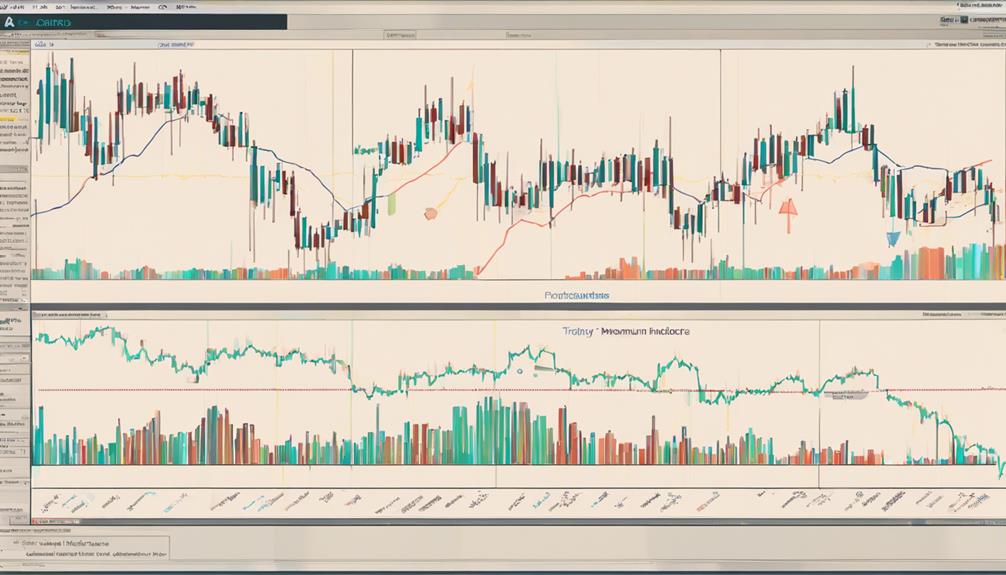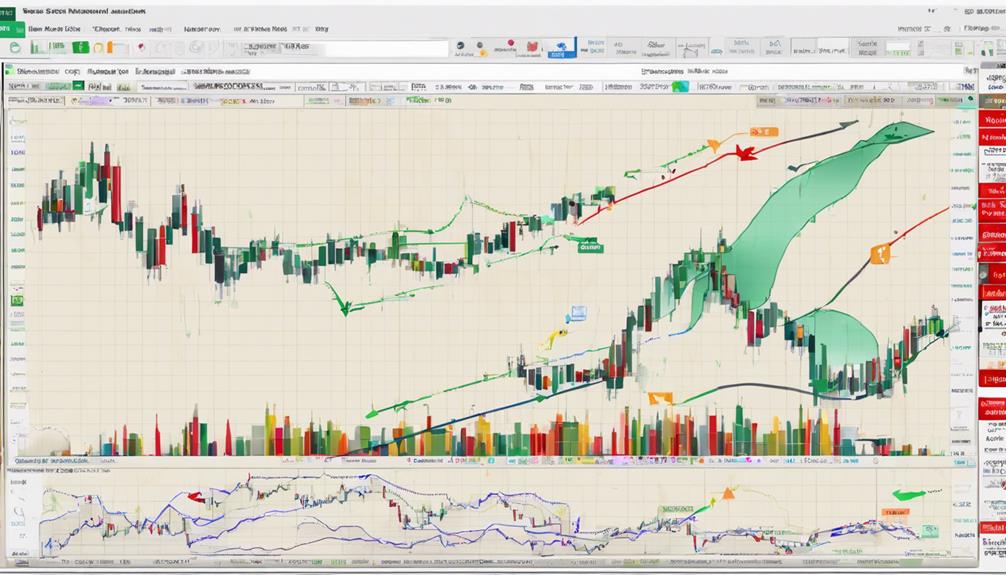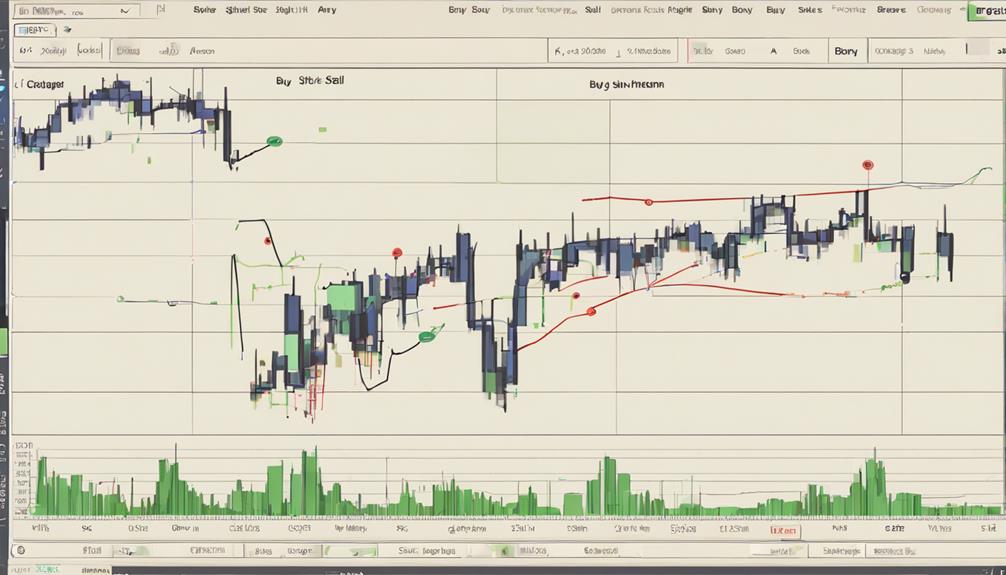Imagine you're a sailor navigating through turbulent waters, relying on the stars to guide your way. Similarly, implementing momentum indicators in your trading strategy can act as your guiding stars in the volatile sea of financial markets.
But how do you ensure these indicators steer you in the right direction? By understanding the nuances of interpreting signals, combining indicators effectively, and staying vigilant to avoid common pitfalls.
Dive into the world of momentum indicators, and unlock the potential they hold in shaping your trading decisions.
Importance of Momentum Indicators Strategy
Utilizing the Momentum Indicators Strategy is paramount in navigating the complexities of stock market trends and making informed trading decisions. Momentum indicators play a crucial role in assessing the strength and direction of price trends by comparing current closing prices with historical data over a specific period.
These indicators aid traders in identifying potential entry and exit points based on trend continuation or reversals. When implementing a strategy with momentum indicators, it's essential to apply filters to reduce noise and confirm signals.
Key Steps in Implementing Momentum Indicators

To effectively implement Momentum Indicators, it's crucial to carefully select the number of periods for calculation and visually plot the indicator on a chart for trend analysis. Here are key steps to guide you in utilizing Momentum Indicators effectively:
- Select a specific number of periods for the Momentum Indicator calculation to compare current and previous closing prices.
- Plot the Momentum Indicator on a chart to visually identify trend direction and strength through highs and lows.
- Interpret the Momentum Indicator results, with values above zero indicating an upward trend and below zero indicating a downward trend.
- Confirm Momentum Indicator signals with other indicators for more reliable buy or sell decisions.
Best Practices for Using Momentum Indicators

Incorporating effective risk management strategies is paramount when utilizing Momentum Indicators in trading practices.
Traders can optimize the use of momentum indicators by implementing filters like price patterns or market trends to enhance signal reliability.
When a momentum indicator crosses the zero line, it can serve as a valuable entry or exit signal for traders.
To mitigate overtrading risks associated with frequent signals, it's essential to exercise caution and apply filters to reduce noise. By doing so, traders can also lower transaction costs and improve the overall effectiveness of their trading strategies.
Ensuring a balanced approach and strategic use of momentum indicators can lead to more informed decision-making and potentially better trading outcomes.
Common Mistakes to Avoid With Momentum Indicators

Using momentum indicators as the sole basis for your trading decisions can lead to costly mistakes if not supplemented with other technical analysis tools.
Be cautious of entering trades based on isolated momentum indicator signals without considering overall market conditions.
Don't overlook the importance of filtering out false signals by incorporating additional confirmation indicators or market trends.
Avoid overtrading by being selective with trades triggered by momentum indicators to prevent excessive transaction costs.
Mistakenly interpreting all crossover points as significant signals can lead to poor trading decisions; validate signals with other factors.
Real-life Applications of Momentum Indicator Strategy

Utilizing momentum indicators in real-life trading scenarios provides traders with valuable insights into trend strength and price movement directions. These indicators assist in making informed buy or sell decisions by analyzing price changes over specific periods.
By interpreting momentum indicator signals, traders can assess market potential, profitability, and potential reversals, aiding in optimizing entry signals and refining trading strategies. The Momentum Indicator serves as a crucial tool for filtering entry signals across different markets.
Understanding and applying momentum indicators are essential for evaluating market trends effectively, enhancing trading strategies, and ultimately improving overall trading performance. By incorporating momentum indicators into your trading approach, you can gain a competitive edge and make more informed decisions in the dynamic world of trading.
What Are the Best Momentum Indicators for Implementing a Technical Strategy?
When implementing a technical strategy, it’s essential to use the best momentum and trend indicators to make informed decisions. Popular choices include the Relative Strength Index (RSI), Moving Average Convergence Divergence (MACD), and the Average Directional Index (ADX). These indicators can provide valuable insights into price movements and potential trend reversals.
Frequently Asked Questions
How Do You Implement Momentum Strategy?
To implement a momentum strategy effectively, you must focus on identifying trend strength and entry/exit points using indicators like Momentum Indicator, RSI, and Stochastic Oscillator. Confirm market momentum with these tools for informed decisions.
What Is the Momentum Indicator Strategy?
You can implement the Momentum Indicator strategy by comparing current and past closing prices to gauge trend strength, helping you spot potential pivot points. Use it alongside other tools for informed trading decisions, like the 100 Line Cross or Divergence.
What Is the Momentum Option Strategy?
Utilize momentum indicators to gauge stock price shifts effectively. Identify prime times to enter or exit options trading. Enhance risk management and efficiency by leveraging these indicators. Capitalize on short-term market trends for optimal results.
What Is the Momentum Investment Strategy?
Focus on identifying and capitalizing on established trends in stock prices with the Momentum Investment Strategy. Richard Driehaus's success showcases the strategy's potential. Strong price movements indicate future trend continuation, offering profitable outcomes with a sound trading plan.
Conclusion
In conclusion, mastering the strategy for implementing momentum indicators is crucial for successful trading. By carefully analyzing market trends and using technical tools effectively, you can make informed decisions and capitalize on opportunities.
However, be mindful of the risks associated with overtrading and false signals. It's essential to strike a balance between confidence and caution to navigate the volatile waters of the financial markets with precision and skill.
